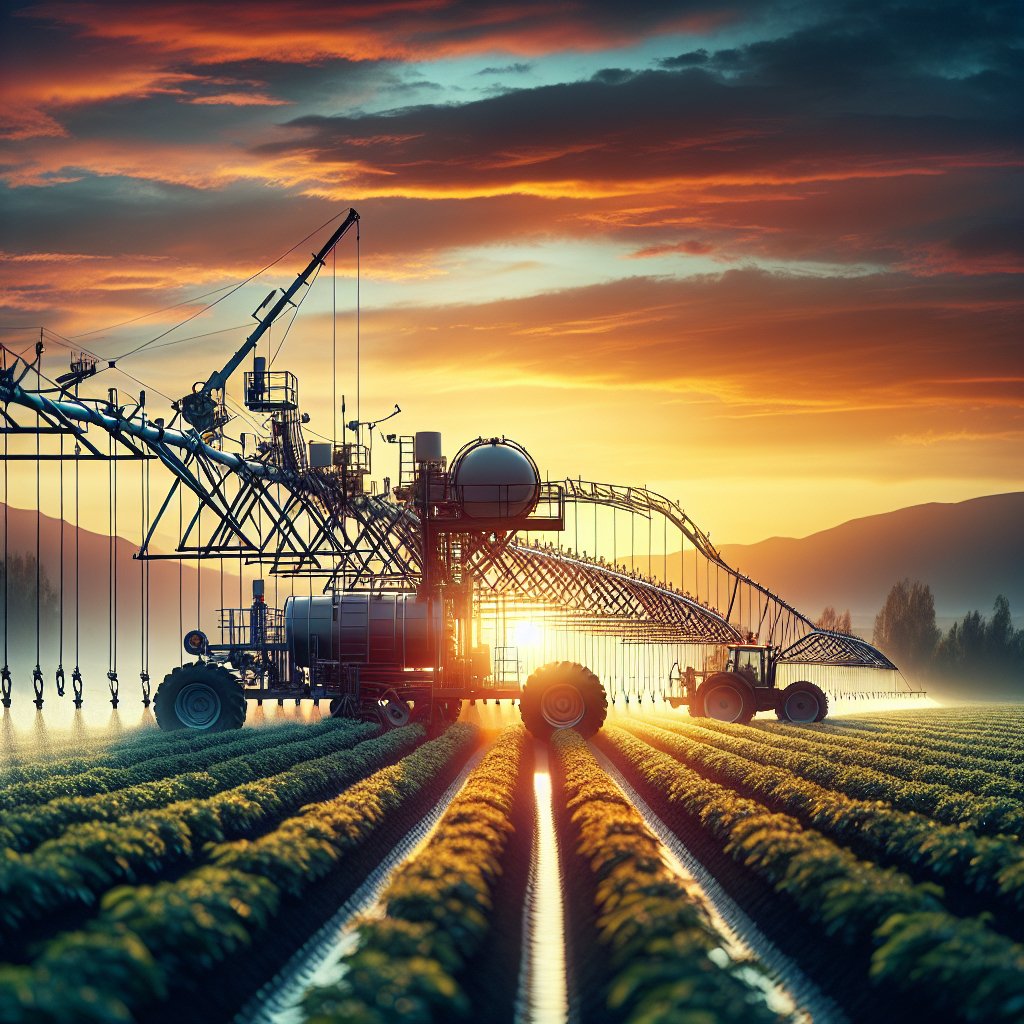
Efficient irrigation systems are crucial for sustainable agriculture, ensuring that crops receive the right amount of water at the right time. Proper maintenance of these systems not only conserves water but also enhances crop yield and reduces operational costs. This article delves into the best practices for maintaining farm irrigation systems, offering insights into routine checks, system upgrades, and innovative technologies that can optimize water usage on farms.
Understanding the Importance of Irrigation System Maintenance
Irrigation systems are the lifeline of modern agriculture, especially in regions where rainfall is insufficient or unpredictable. These systems, whether they are drip, sprinkler, or surface irrigation, require regular maintenance to function efficiently. Neglecting maintenance can lead to water wastage, increased energy consumption, and reduced crop productivity. Therefore, understanding the importance of maintaining these systems is the first step towards sustainable farming.
Regular maintenance ensures that the irrigation system operates at its optimal capacity. It helps in identifying leaks, clogs, and other issues that can affect water distribution. Moreover, well-maintained systems can significantly reduce water usage, which is not only beneficial for the environment but also for the farmer’s bottom line. By investing time and resources into maintenance, farmers can ensure that their irrigation systems remain reliable and efficient.
Routine Checks and Maintenance Practices
Routine checks are the backbone of any maintenance strategy. They help in identifying potential issues before they escalate into major problems. Here are some essential routine checks and maintenance practices that every farmer should consider:
Inspecting for Leaks and Blockages
Leaks and blockages are common issues in irrigation systems that can lead to uneven water distribution. Regularly inspecting pipes, hoses, and emitters for leaks can prevent water wastage. Blockages, often caused by debris or mineral deposits, can be cleared using appropriate cleaning solutions or tools. Ensuring that all components are free from obstructions will help maintain consistent water flow.
Checking Pump and Motor Efficiency
The pump and motor are critical components of an irrigation system. Regularly checking their efficiency can prevent unexpected breakdowns. This includes inspecting for unusual noises, vibrations, or overheating. Lubricating moving parts and replacing worn-out components can extend the lifespan of the pump and motor, ensuring they operate smoothly.
Monitoring Water Pressure and Flow Rates
Maintaining the correct water pressure and flow rate is essential for efficient irrigation. Too much pressure can damage the system, while too little can result in inadequate watering. Installing pressure gauges and flow meters can help monitor these parameters. Adjustments can be made to ensure that the system operates within the recommended range, optimizing water usage.
System Upgrades and Technological Innovations
As technology advances, so do the opportunities to enhance irrigation systems. Upgrading to more efficient components and integrating new technologies can significantly improve system performance. Here are some innovations that can be considered:
Smart Irrigation Controllers
Smart irrigation controllers use weather data and soil moisture sensors to adjust watering schedules automatically. This technology ensures that crops receive the right amount of water, reducing wastage and improving efficiency. By investing in smart controllers, farmers can optimize their irrigation practices and respond to changing environmental conditions.
Drip Irrigation Systems
Drip irrigation is one of the most efficient methods of watering crops, delivering water directly to the plant roots. Upgrading to a drip system can reduce water usage by up to 50% compared to traditional methods. It also minimizes evaporation and runoff, ensuring that water is used effectively. Regular maintenance of drip systems involves checking emitters for clogs and ensuring that the tubing is intact.
Solar-Powered Irrigation
Solar-powered irrigation systems offer a sustainable alternative to traditional energy sources. By harnessing solar energy, farmers can reduce their reliance on fossil fuels and lower their operational costs. These systems are particularly beneficial in remote areas where access to electricity is limited. Regular maintenance of solar panels and batteries is essential to ensure consistent performance.
Conclusion
Maintaining farm irrigation systems is a critical aspect of modern agriculture that requires attention and diligence. By implementing routine checks, embracing technological innovations, and upgrading system components, farmers can ensure that their irrigation systems operate efficiently. These practices not only conserve water and energy but also enhance crop yield and profitability. As the agricultural landscape continues to evolve, staying informed about the latest maintenance techniques and technologies will be key to sustainable farming success.

